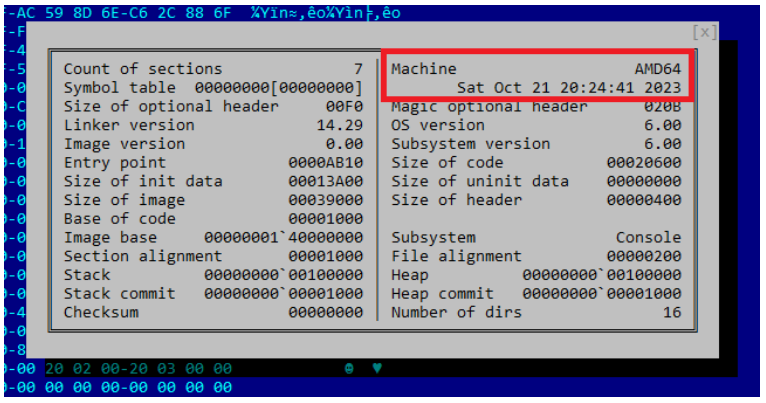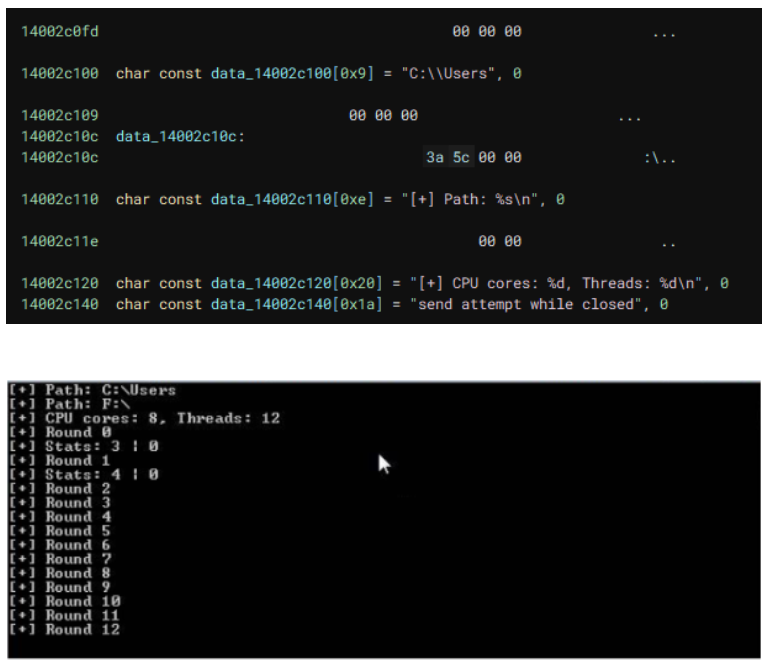BiBi Wiper Used in the Israel-Hamas War Now Runs on Windows
Summary
On Oct. 30, Israeli-based incident response company SecurityJoes posted findings about a new wiper malware for Linux systems used by pro-Hamas hacktivists in the Israel-Hamas war. The company is currently tracking the malware as the BiBi-Linux Wiper.
The next day, the BlackBerry Research and Intelligence Team found a variant that targets Windows systems, which we’ve labeled the BiBi-Windows Wiper.
Context
Following the Hamas terrorist attack on Israel on Oct. 7, the physical war between Hamas and Israel has broken through into the cyber realm. A suspected Hamas-affiliated hacktivist group broke into Israeli companies across the nation, compromising Internet-facing hosts to access their networks, and deployed a new and highly specific cyberweapon in an apparent attempt to damage the companies’ infrastructure. The new malware, BiBi-Linux Wiper, was uncovered by an IR (incident response) team providing assistance for the Israeli companies.
The attack had no ransom note or command-and-control (C2) servers, which led responders to surmise that the BiBi-Linux malware is a wiper, deployed for the sole reason of causing data destruction. Upon analysis, the team discovered that the Israeli Prime Minister’s commonly-used nickname, Bibi (aka Benjamin Netanyahu), was hardcoded in the malware and in the extension of every destroyed file.
SecurityJoes’ team theorizes that the wiper may have been created “by a group of hackers affiliated with Hamas, with the intent to sow chaos amidst the backdrop of war.”
The Windows variant detected by BlackBerry confirms that the threat actors who created the wiper are continuing to build out the malware, and indicates an expansion of the attack to target end user machines and application servers. By diversifying their target systems, the attackers will very likely ensnare additional machines that run on Windows — an operating system that at the time of writing currently accounts for 68% of total desktop users worldwide, versus a mere 2.9% who use Linux.
Technical Analysis of the BiBi-Windows Wiper
MD5
|
e26bba0304f14ef96beb60376791d32c
|
SHA256
|
40417e937cd244b2f928150cae6fa0eff5551fdb401ea072f6ecdda67a747e17
|
File Name
|
bibi.exe
|
File Size
|
203.00 KB (207872 bytes)
|
File Type
|
Win PE x64
|
Compiler
|
Visual Studio (2019)
|
The timestamp on the BiBi-Windows Wiper suggests the implant was compiled on Saturday, Oct. 21, 2023, just 14 days after Hamas’ initial terror attack on Israel. The malware sample is a x64 Windows portable executable (PE) compiled using Visual Studio 2019, with a file size of 203KB.
Figure 1: BiBi-Windows Wiper's timestamp
While the infection vector is currently unknown, once the implant is executed, it checks the processor architecture and the number of threads in the intended victim’s system. For the fastest possible destruction action, the malware runs 12 threads with eight processor cores. During execution, the wiper outputs the result to the console.
Figure 2: BiBi's console output
The sample destroys all files except those with .exe, .dll, and .sys extensions, because those types of files are essential for the computer to operate. Those extensions are hardcoded in the code for skipping, so that the malware can run its course of destruction.
The wiping process is performed so the targeted files are filled out with random bytes, essentially rendering the file unusable—and unrecoverable. Then, the files are renamed to a random sequence of letters that consists of 10 characters, and the extension BiBi1 from 1 to 5 is added. A typical filename would follow the structure: [Filename].BiBi[number].
The implant also deletes shadow copies from the system, preventing the user from recovering their files, unless they have an offline backup handy. Shadow Copy is a technology included in Windows that creates backup copies or snapshots of computer files or volumes, even when they are in use.
cmd.exe /c vssadmin delete shadows /quIet /all
cmd.exe /c wmic shadowcopy delete |
It also disables the system's trigger to call the Error Recovery screen on startup.
cmd.exe / c bcdedit / set {default} bootstatuspolicy ignoreallfailures
|
Finally, it turns off the Windows Recovery feature so the system may not be recovered.
cmd.exe /c bcdedit /set {default} recoveryenabled no
|
All CMD commands in the code are stored with a right-to-left technique to bypass simple pattern detection rules typically used by legacy antivirus products.
Figure 3: BiBi-Windows Wiper’s commands stored with a right-to-left technique
Finally, BiBi-Windows Wiper relies on the Restart Manager and its Rstrtmgr.dll to meet the process till the end.
Conclusion
As the Israel-Hamas war continues to escalate, it seems there are no safe harbors in either the physical or digital realm. Wipers are typically utilized in attacks prompted by geopolitical events because the goal of a wiper is destruction, plain and simple, rather than the monetary objectives that motivate attackers who spread non-wiping malware or ransomware.
As the conflict continues, it’s likely we’ll see more of this type of attack.
Indicators of Compromise (IoCs)
File Name
|
Size
|
SHA256
|
bibi.exe
|
203.00 KB (207872 bytes)
|
40417e937cd244b2f928150cae6fa0eff5551fdb401ea072f6ecdda67a747e17
|
Hunting Yara Rule
rule BIBI_Wiper_Windows {
meta:
description ="BiBi-Windows Wiper used in the Gaza War"
author ="The BlackBerry Research and Intelligence Team"
date = "2023-10-31"
hash ="40417e937cd244b2f928150cae6fa0eff5551fdb401ea072f6ecdda67a747e17"
version = "1.0"
strings:
$a1 = "[+] Stats: " ascii wide
$a2 = "C:\\Users" ascii wide
$a3 = "[!] Waiting For Queue " ascii wide
$a4 = "[+] Round " ascii wide
$a5 = "[+] Path: " ascii wide
$a6 = "[+] CPU cores: " ascii wide
condition:
uint16(0) == 0x5a4d and ((filesize < 2000KB) and all of ($a*))
}
|
Related Reading:





